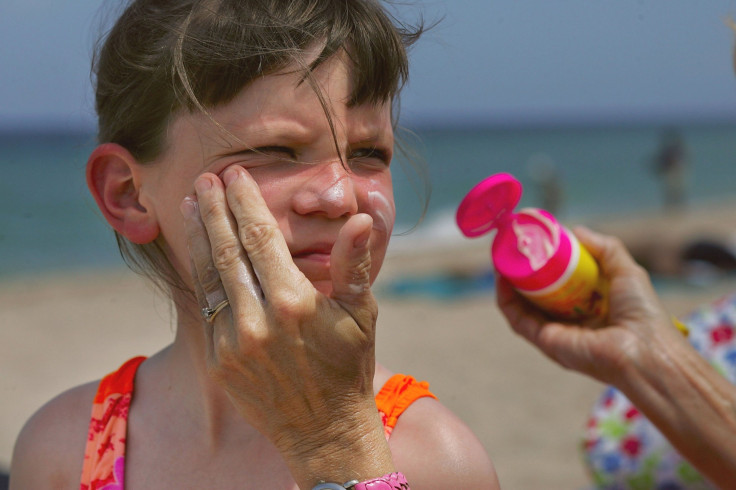Is Sunscreen Good For Kids?

Summer break is coming up and parents have already started looking for the best sunscreen products available in the market for their little ones.
However, several sunscreen products available in the US market contain harmful chemicals, says a new study. According to the Environmental Working Group (EWG), a majority of these products are ineffective and even unsafe for children.
Additionally, the non-profit organization has also revealed that many of the SPF products do not protect skin from harmful UV rays. To help parents choose the best sunscreen for children, EWG assessed over 1,300 sunscreen products currently available in the market.
During the study, the researchers found that two-third of the SPF products contain dangerous ingredients such as oxybenzone. Although this pale-yellow solid is believed to be safe for children above six months, EWG described it as a “potentially hormone-disrupting chemical that is readily absorbed by the body”.
The EWG has stated that this chemical ingredient could be more harmful for children than adults because of its higher penetration and absorption.
“Oxybenzone is allergenic and it is a potential endocrine disruptor. It is absorbed through the skin in large amounts and it has been detected in human breast milk, amniotic fluid, urine and blood,” the organization said in a statement.
The Food and Drug Administration (FDA) has also raised concerns about using products with high SPF. The agency has urged people to limit the use of sunscreen products with 60+ SPF.
FDA has also said products with higher SPF values give users “a false sense of protection”. As a result, they get overexposed to harmful UV rays and its increases the risk of cancer and other long-term skin damage.
“Higher sun protection factor values, or SPF, have not been shown to provide additional clinical benefit and may provide users with a false sense of security,” the agency said in a statement.
However, more than 10 percent of the sunscreen products on the shelf exceed SPF limit. According to the EWG report, 25 percent of the products do not pass the latest FDA proposed UV standards, which was based on the EWG modeling.
Meanwhile, there is a rapid increase in homemade sunscreen products. According to a study titled “Pinterest Homemade Sunscreens: A Recipe for Sunburn”, many of the homemade sunscreen products do not offer sufficient UV protection.
“Homemade sunscreen products are risky because they are not regulated or tested for efficacy like commercial sunscreens. With rising skin cancer rates, the use of effective broadband sunscreen is critical to reduce incidence of skin cancer,” according to the research paper, published in a journal called Health Communication.
© Copyright IBTimes 2024. All rights reserved.





















